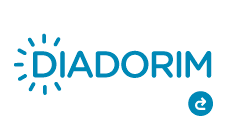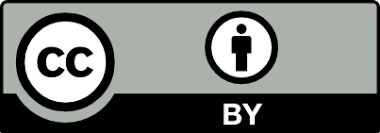DEVELOPMENT OF A PROTOTYPE OF STAIRS USING THE PIEZOELECTRIC EFFECT
Abstract
Piezoelectricity produces clean and renewable energy; although the piezoelectric effect was discovered in 1880, its applications as an energy source still need to be explored. Therefore, knowing it and spreading it is extremely important for society. Thus, the present work aims to apply the piezoelectric effect. In this effect, mechanical stress on a specific material will be polarized; that is, there will be a separation between the positive and negative electrical charges. Due to this, an electric current that can be used in different ways will be observed. The prototype's goal was developed consisting of a ladder coated with piezoelectric chips that, in turn, are connected to an LED strip. This tape is accessed every time the user presses (steps) on them, making it possible to observe the transformation of mechanical energy into electrical energy. The prototype of the piezoelectric ladder can be applied in the most diverse situations, in particular, in cinemas and buildings or in any places where there is a considerable flow of people or vehicles, such as avenues and highways.
Downloads
References
BURATTINI, M. P. T. D. C. Energia uma abordagem multidisciplinar. São Paulo: Editora Livraria da Física, 2008.
CALLISTER, J. W. D. Ciência e Engenharia de Materiais Uma Introdução. LTC. 5. ed.1999.
DHINGRA, P.; BISWAS, J; PRASAD, A; MEHER, S. Energy Harvesting using Piezoelectric Materials. Special Issue of International Journal of Computer Applications, p. 38–42, 2012.
GEARBEST, Datasheet: Kwb Fita de Luz LED 2835. Disponível em:
GOLDEMBERG, J.; PALETTA, F. C. Energias renováveis. São Paulo: Editora Blucher, 2012.
HU, Y.; XU, C.; Zhang, Y.; Lin, L.; Snyder, R. and Wang, L.Z. A nanogenerator for energy harvesting from a rotating tire and its application as a self-powered pressure/speed sensor. Advanced Materials, v. 23, n. 35, p. 4068–4071, 2011.
JAFFE, B.; COOK, W. R.; JAFFE, JR. H. PIEZOELECTRIC CERAMICS. New York, ACADEMIC PRESS, 1973.
JIANG, X. LI, Y; LI, J; WANG, J.; YAO,J. Piezoelectric energy harvesting from traffic-induced pavement vibrations. Journal of Renewable and Sustainable Energy, v. 6, n. 4, p. 1–16, 2014.
LEO, J. D. Engineering Analysis of Smart Material Systems. Hoboken: John Wiley & Sons, 2007.
MONTANHER, D. Z. M. Caracterização e Desempenho de Transformadores de Estado Sólido Radiais Multiferroicos. 2010.
OptoSupply, Datasheet: 5mm Round Red & Red LED. Disponível em:
PADILHA, A. F. Materiais de Engenharia – Microestrutura e Propriedades. HEMUS, 2007.
PALOSAARI, J. Energy Harvesting From Walking Using Piezoelectric Cymbal and Diaphragm Type Structures. University of Oulu Graduate School; University of Oulu, Faculty of Information Technology and Electrical EngineeringActa Univ. Oul. C 630, 2017.
PERLINGEIRO, A. R.; PIMENTA, G. M.; SILVA, S. E. DA. Geração De Energia Através De Materiais Piezoelétricos. Centro Federal De Educação Tecnológica Celso Suckow Da Fonseca, p. 62, 2016.
REIS, L. B. DOS. Geração de Energia Elétrica. 2a Edição ed. Barueri, SP: Editora Manole Ltda, 2011.
SHACKELFORD, J. F. Ciência dos materiais. 6. ed. PEARSON, 2008.
SYMTRONIC, Sistemas eletrônicos LTDA. Datasheet: LED 5mm - VERMELHO DIFUSO. Disponível em:
TICHÝ, J. ERHART, J; KITTINGER, E; PRÍVRATSKÁ, J. Fundamentals of Piezoeletric Sensorics: Mechanical, Dielectric, and Thermodynamical Properties of Piezoelectric Materials. SPRINGER, 2010.
VIVES, A. A. Piezoelectric Transducers and Applications. SPRINGER, 2008.
WANG, Z.; HU, J.; SURYAVANSHI, P.A.; YUM, K.; YU, M.F. Voltage Generation from Individual BaTiO3 Nanowires under Periodic Tensile Mechanical Load. Nano Letters, v. 7, n. 10, p. 2966–2969, 2007.
DECLARAÇÃO DE ORIGINALIDADE E DIREITOS AUTORAIS
Declaro que o presente artigo é original, não tendo sido submetido à publicação em qualquer outro periódico nacional ou internacional, quer seja em parte ou em sua totalidade.
Os direitos autorais pertencem exclusivamente aos autores. Os direitos de licenciamento utilizados pelo periódico é a licença Creative Commons Attribution 4.0 (CC BY ): são permitidos o acompartilhamento (cópia e distribuição do material em qualqer meio ou formato) e adaptação (remix, transformação e criação de material a partir do conteúdo assim licenciado para quaisquer fins, inclusive comerciais.

Recomenda-se a leitura desse link para maiores informações sobre o tema: fornecimento de créditos e referências de forma correta, entre outros detalhes cruciais para uso adequado do material licenciado.

















